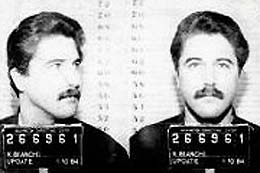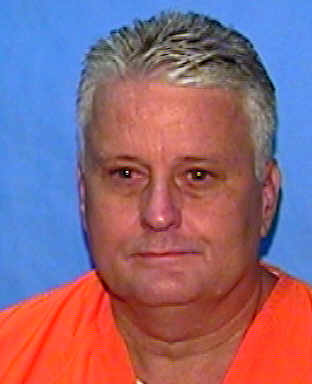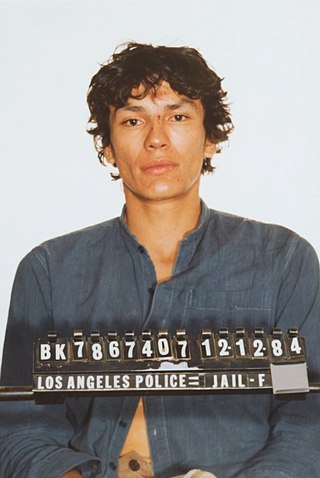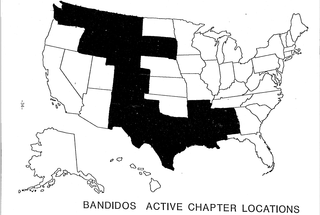
Kenneth Alessio Bianchi is an American serial killer, kidnapper, and rapist. He is known for the Hillside Strangler murders committed with his cousin Angelo Buono Jr. in Los Angeles, California, as well as for murdering two more women in Washington by himself. Bianchi is currently serving a sentence of life imprisonment in Washington State Penitentiary for these crimes. Bianchi was also at one time a suspect in the Alphabet murders, three unsolved murders in his home city of Rochester, New York, from 1971 to 1973.

San Quentin Rehabilitation Center (SQ), formerly known as San Quentin State Prison, is a California Department of Corrections and Rehabilitation state prison for men, located north of San Francisco in the unincorporated place of San Quentin in Marin County.

Sarah Evelyn Isobel Payne was the victim of a high-profile abduction and murder in West Sussex, England in July 2000.

Junko Furuta was a Japanese high school student who was abducted, raped, tortured and subsequently murdered. Her case was called the "concrete-encased high school girl murder case" (女子高生コンクリート詰め殺人事件), since her body was discovered in a concrete drum.
The Mahmudiyah rape and killings were a series of war crimes committed by five U.S. Army soldiers during the U.S. occupation of Iraq, involving the gang-rape and murder of 14-year-old Iraqi girl Abeer Qassim Hamza al-Janabi and the murder of her family on March 12, 2006. It occurred in the family's house to the southwest of Yusufiyah, a village to the west of the town of Al-Mahmudiyah, Iraq. Other members of al-Janabi's family murdered by American soldiers included her 34-year-old mother Fakhriyah Taha Muhasen, 45-year-old father Qassim Hamza Raheem, and 6-year-old sister Hadeel Qassim Hamza al-Janabi. The two remaining survivors of the family, 9-year-old brother Ahmed and 11-year-old brother Mohammed, were at school during the massacre and orphaned by the event.
This is a list of notable overturned convictions in the United States.

Channon Gail Christian, aged 21, and Hugh Christopher Newsom Jr., aged 23, were from Knoxville, Tennessee, United States. They were kidnapped on the evening of January 6, 2007, when Christian's vehicle was carjacked. The couple were taken to a rental house. Both of them were raped, tortured, and murdered. Four males and one female were arrested, charged, and convicted in the case. In 2007, a grand jury indicted Letalvis Darnell Cobbins, Lemaricus Devall Davidson, George Geovonni Thomas, and Vanessa Lynn Coleman on counts of kidnapping, robbery, rape, and murder. Also in 2007, Eric DeWayne Boyd was indicted by a federal grand jury of being an accessory to a carjacking, resulting in serious bodily injury to another person and misprision of a felony. In 2018, Boyd was indicted on state-level charges of kidnapping, robbery, rape, and murder.

David Parker Ray, also known as the Toy-Box Killer, was an American kidnapper, torturer, serial rapist and suspected serial killer. Though no bodies were found, Ray was accused by his accomplices of killing several women, and was suspected by the police to have murdered as many as sixty women from Arizona and New Mexico while living in Elephant Butte, New Mexico. Ray was convicted of kidnapping and torture in 2001, for which he received a lengthy sentence, but he was never convicted of murder. He died of a heart attack about one year after his convictions in two cases, the second of which resulted in a plea deal.

Robert Joseph "Bobby Joe" Long was an American serial killer and rapist who was executed by the state of Florida for the murder of Michelle Denise Simms. Long abducted, sexually assaulted, and murdered at least ten women in the Tampa Bay area in Florida during an eight-month period in 1984. He released 17-year-old Lisa McVey after 26 hours. McVey provided critical information to the police that enabled them to arrest Long.
In the United States, life imprisonment is the most severe punishment provided by law in states with no valid capital punishment statute, and second-most in those with a valid statute. According to a 2013 study, 1 of every 2 000 inhabitants of the U.S. were imprisoned for life as of 2012.

The Breed Motorcycle Club was a one-percenter motorcycle club that was formed in Asbury Park, New Jersey in the United States in 1965. The club disbanded in 2006 after numerous prominent members were indicted on racketeering and drug trafficking charges.

The history of violence against LGBT people in the United States is made up of assaults on gay men, lesbians, bisexuals, and transgender individuals (LGBT), legal responses to such violence, and hate crime statistics in the United States of America. The people who are the targets of such violence are believed to violate heteronormative rules and they are also believed to contravene perceived protocols of gender and sexual roles. People who are perceived to be LGBT may also be targeted for violence. Violence can also occur between couples who are of the same sex, with statistics showing that violence among female same-sex couples is more common than it is among couples of the opposite sex, but male same-sex violence is less common.

Ricardo Leyva Muñoz Ramirez, known as Richard Ramirez, dubbed the Night Stalker, the Walk-In Killer and the Valley Intruder, was an American serial killer and sex offender whose crime spree took place in California from June 1984 until his capture in August 1985. He was convicted and sentenced to death in 1989, and died while awaiting execution in 2013.
Alvin Howard Neelley, Jr. and Judith Ann Adams Neelley are an American married couple who committed the kidnappings and torture murders of Lisa Ann Millican and Janice Kay Chatman; they also attempted a third abduction. Judith was sentenced to death in 1983, but her sentence was commuted to life imprisonment in 1999. She served her sentence at the Julia Tutwiler Prison for Women in Wetumpka, Alabama. Alvin was serving a life sentence at the Bostick State Prison in Hardwick, Georgia at the time of his death in 2005.
Capital punishment is a legal punishment in Tennessee.

The 1594 trial of alleged witch Allison Balfour or Margaret Balfour is one of the most frequently cited Scottish witchcraft cases. Balfour lived in the Orkney Islands of Scotland in the area of Stenness. At that time in Scotland, the Scottish Witchcraft Act 1563 had made a conviction for witchcraft punishable by death.

Numerous police and international intelligence agencies classify the Hells Angels Motorcycle Club as a motorcycle gang and contend that members carry out widespread violent crimes, including drug dealing, trafficking in stolen goods, gunrunning, extortion, and prostitution rings. Members of the organization have continuously asserted that they are only a group of motorcycle enthusiasts who have joined to ride motorcycles together, to organize social events such as group road trips, fundraisers, parties, and motorcycle rallies, and that any crimes are the responsibility of the individuals who carried them out and not the club as a whole.
Raymont Hopewell is an American serial killer and rapist who attacked ten elderly people in Baltimore, Maryland, between 1999 and 2005, killing five. In a deal with prosecutors, Hopewell pleaded guilty to five counts of murder in order to avoid execution, and received four life sentences.

The Bandidos Motorcycle Club has been designated an outlaw motorcycle gang by the U.S. Department of Justice. The club is involved in drug trafficking, weapons trafficking, prostitution, money laundering, explosives violations, motorcycle and motorcycle-parts theft, intimidation, insurance fraud, kidnapping, robbery, theft, stolen property, counterfeiting, contraband smuggling, murder, bombings, extortion, arson and assault. The Bandidos partake in transporting and distributing cocaine and marijuana, and the production, transportation and distribution of methamphetamine. Active primarily in the Northwestern, Southeastern, Southwestern and the West Central regions, there are an estimated 800 to 1,000 Bandidos members and 93 chapters in 16 U.S. states.












